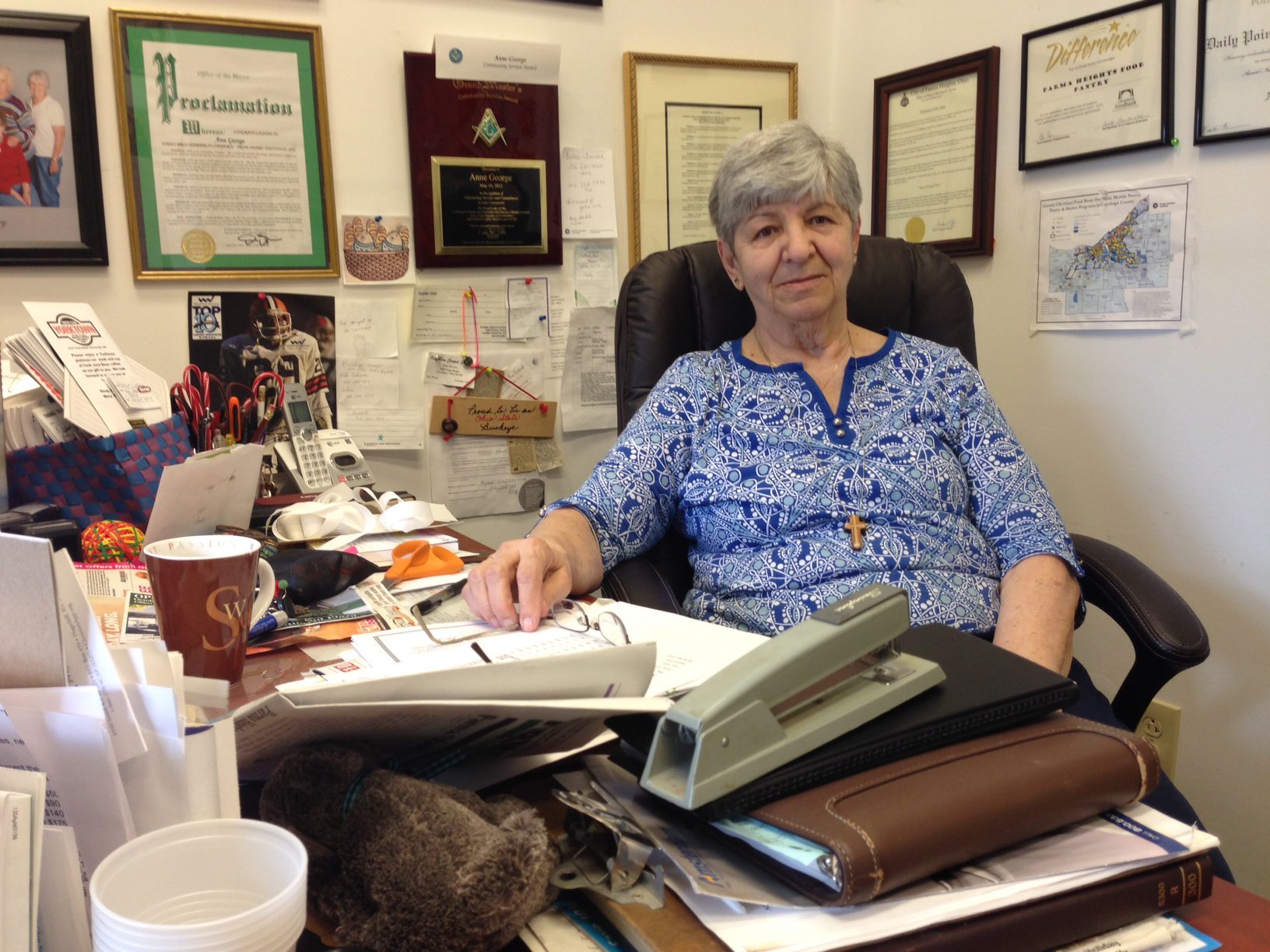By Alison Grant
When Ann George opened the Parma Heights Food Pantry in 2008, the depth of the Great Recession wasn’t yet apparent. The local food bank told her she would likely see about 50 families a month.
Eight years later, with the recession long since officially over — and recent census data showing years of high poverty easing in communities across the U.S. – the pantry supplies food to 280 to 300 families a month.
“We’re seeing people that have gotten jobs again, but they’re not the good-paying jobs that they had,” George said. “I’ve actually had men come in here and cry. They say they never expected to see themselves in a place like this.”
George started concentrating on hunger in Parma Heights in 2007 after she overheard two women in the grocery store talk about struggling to make ends meet after their husbands died and their pensions were cut by more than half.
A meeting was set for that night at her church to discuss mission donations to Central America. George told parishioners the money was needed at home. When she started making calls to drum up interest in a pantry, she ran into disbelief that there could be a problem in Parma Heights.
“I found out then that if you weren’t affected by it, you didn’t know how bad it was,” said George. It was the same thing Michael Harrington described 50 years earlier in his book “The Other American,” when he said that poverty survived because it was invisible to most Americans.



